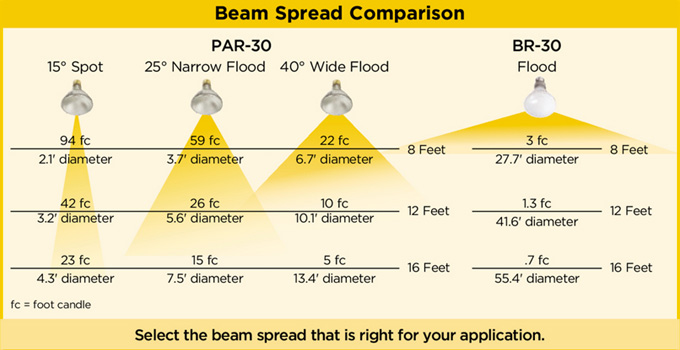How to Measure Beam Spreads
Beam spread, or beam angle, measures the spread of light (the width of the beam) from a reflectorized light source. The beam spread number is important to know when deciding how much light you want displayed on an object, a sign, or on your floors. Knowing the beam spread number also helps you purchase the right light bulbs for the desired lighting effect you want.

Spot Beam vs. Flood
Reflector lamps have either a spot or flood beam depending on their size. The difference between a spot beam and a flood is the width of the beam, or the beam spread. Having both styles gives you more lighting options throughout your property.
Spot Beams:
- Output a narrow beam of light, usually less than 45 degrees
- Most of the light is concentrated into a smaller area
- Ideal for track lighting, nighttime walkways, displays, and recessed trims
Flood Beams:
- Output a much wider beam of light, typically up to 120 degrees
- Provides a fuller light stream to illuminate larger areas
- Great for landscaping, ceiling lights, security, and signage
How to Measure Beam Spread
To find the beam width from a given distance, use this simple formula:
Angle of Beam x .018 x Distance = Beam Spread
Let's say you need to know the beam spread of a 120 degree floodlight from a distance of 15 feet. Just plug in the numbers into the formula shown above:
120 x .018 x 15 = 32.4
Beam Spread Chart
To make calculations easy, use this handy table to determine beam spread.

